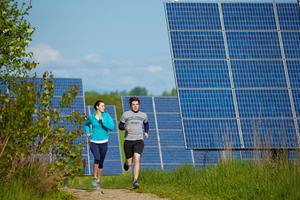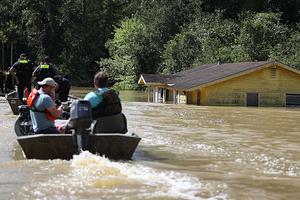North America
-
The Greenhouse Gas Riddle
What is Causing the Recent Rise in Methane Emissions?
-
Natural Aquaculture
Can We Save the Oceans By Farming Them?
-
A Post-Fact World
How the Attack on Science Is Becoming a Global Contagion
-
Disappearing Species
What’s Killing Native Birds in the Mountain Forests of Kauai?
-
Exploring How and Why Trees ‘Talk’ to Each Other
Ecologist Suzanne Simard has shown how trees use a network of soil fungi to communicate their needs and aid neighboring plants. Now she’s warning that threats like clear-cutting and climate change could disrupt these critical networks.
-
Wildlife Farming: Does It Help Or Hurt Threatened Species?
Wildlife farming is being touted as a way to protect endangered species while providing food and boosting incomes in rural areas. But some conservation scientists argue that such practices fail to benefit beleaguered wildlife.
-
Science in the Wild: The Legacy Of the U.S. National Park System
As the National Park Service marks its centennial this month, the parks are being celebrated for their natural beauty and priceless recreational opportunities. But they also provide a less recognized benefit: the parks serve as a living laboratory for critical scientific research.
-
Video Contest Winner - 1st Place
The Dungeness Crab Faces Uncertain Future on West Coast
-
Rocky Flats: A Wildlife Refuge Confronts Its Radioactive Past
The Rocky Flats Plant outside Denver was a key U.S. nuclear facility during the Cold War. Now, following a $7 billion cleanup, the government is preparing to open a wildlife refuge on the site to the public, amid warnings from some scientists that residual plutonium may still pose serious health risks.
-
Video Contest Winner - Runner Up
After Denial: How People React to the Hard Reality of Climate Change
-
The New Green Grid: Utilities Deploy ‘Virtual Power Plants’
By linking together networks of energy-efficient buildings, solar installations, and batteries, a growing number of companies in the U.S. and Europe are helping utilities reduce energy demand at peak hours and supply targeted areas with renewably generated electricity.
-
At Ground Zero for Rising Seas, TV Weatherman Talks Climate
John Morales is part of a new breed of television weather forecasters seeking to educate viewers on climate change and the threat it poses. In South Florida, where sea level rise is already causing periodic flooding, he has a receptive audience.
-
How Growing Sea Plants Can Help Slow Ocean Acidification
Researchers are finding that kelp, eelgrass, and other vegetation can effectively absorb CO2 and reduce acidity in the ocean. Growing these plants in local waters, scientists say, could help mitigate the damaging impacts of acidification on marine life.











